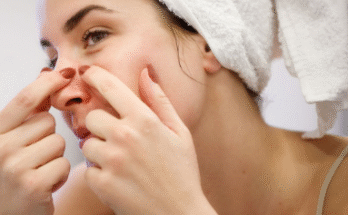Tea tree oil has become one of the most talked-about natural remedies for pimples, and for good reason. Derived from the leaves of the Melaleuca alternifolia plant native to Australia, this essential oil has been used for centuries for its soothing and purifying properties.
Today, it’s a favorite ingredient in many skincare routines, especially for those who prefer a gentle, plant-based approach to clearer skin.
What makes tea tree oil special is its naturally occurring antibacterial and anti-inflammatory qualities. These properties can help reduce the appearance of pimples while keeping the skin calm.
When a pimple forms, it’s often due to excess oil, bacteria, and dead skin cells clogging the pores. Tea tree oil helps by addressing these causes directly. It can reduce the buildup of bacteria that contributes to breakouts and minimize redness and swelling, making pimples appear less noticeable over time.
Using tea tree oil correctly is essential to achieving good results without irritation. Because it’s a concentrated essential oil, it should never be applied directly to the skin without dilution. A safe way to use it is by mixing a few drops of tea tree oil with a carrier oil such as jojoba oil, coconut oil, or olive oil. This blend can then be applied gently to affected areas using a clean cotton swab. Many people find that consistent use, once or twice a day, helps keep their skin balanced and refreshed.
For those who prefer convenience, there are also skincare products that already contain tea tree oil in safe concentrations. These include face washes, toners, serums, and spot treatments that are easy to use and often combined with other skin-friendly ingredients. When choosing such products, it’s a good idea to look for labels that mention being suitable for sensitive or acne-prone skin. This ensures that the formula is gentle enough for everyday use.
One of the best things about tea tree oil is that it supports the skin’s natural recovery process. Instead of harshly stripping away oils or causing dryness, it works in harmony with the skin’s protective barrier. This makes it a great option for people who want to manage pimples without the side effects sometimes associated with stronger treatments. Over time, with consistent use and proper skincare habits, many users notice an improvement in skin clarity and smoothness.
However, like with any skincare ingredient, results can vary. Some people may notice improvements quickly, while for others, it may take several weeks of consistent use. It’s always wise to do a patch test before trying any new product or essential oil. Applying a small amount of diluted tea tree oil to the inside of the arm and waiting 24 hours can help ensure that the skin reacts well before applying it to the face.
A balanced skincare routine that includes gentle cleansing, hydration, and protection from environmental factors can further enhance the benefits of tea tree oil. Drinking plenty of water, eating nutritious foods, and keeping stress levels in check also play a role in maintaining healthy-looking skin. Natural remedies like tea tree oil work best when combined with overall good skincare practices.
In short, tea tree oil offers a simple, natural, and effective way to care for pimple-prone skin. Its gentle action, combined with its antibacterial power, makes it a reliable ally for anyone looking to achieve clearer, healthier-looking skin without harsh chemicals. Whether used on its own in a diluted form or as part of a thoughtfully formulated skincare product, tea tree oil remains one of nature’s most trusted gifts for skin clarity and confidence.
Would you like me to adapt this article for a specific platform (e.g., your blog or skincare website) or audience (e.g., teens, adults, or natural beauty enthusiasts)? I can tailor the tone and structure accordingly.


